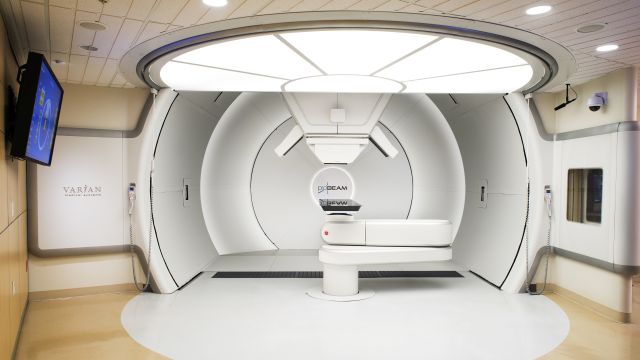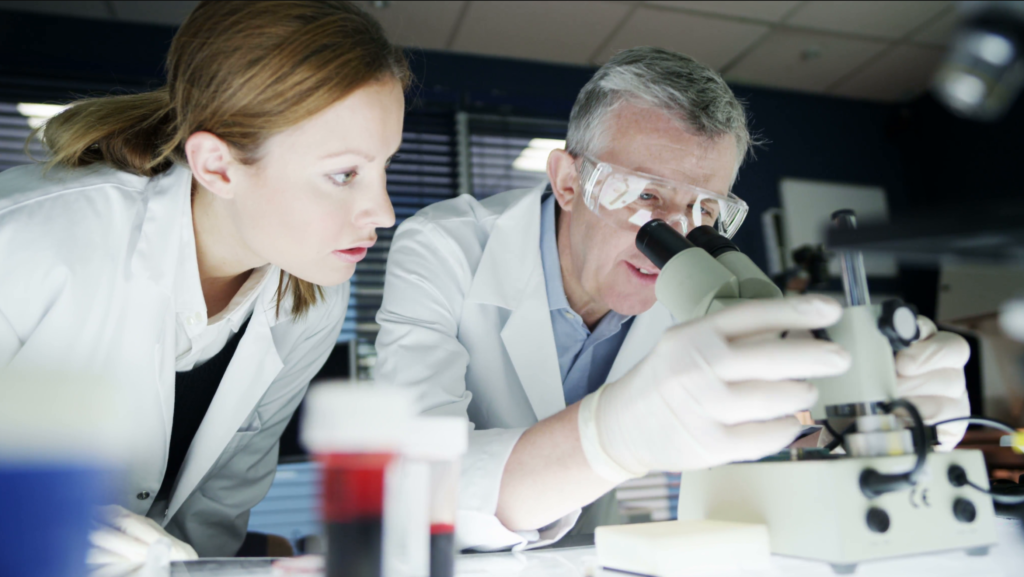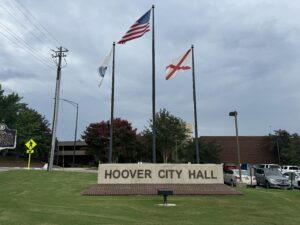Carly’s Law study at UAB finds medical marijuana oil helps epilepsy patients

It’s official: cannabidiol, or CBD oil, oil derived from marijuana plants, helps reduce the number of seizures in patients with treatment-resistant epilepsy. That’s according to findings by the University of Alabama at Birmingham (UAB) released earlier this month. CBD oil, which contains little of the “high-inducing” chemical THC, came into the Alabama lexicon with the passage of “Carly’s Law,” in 2014 after piece of legislation provided the UAB Epilepsy Center and Children’s of Alabama the ability to conduct clinical trials of cannabidiol, a component of cannabis. Starting in 2015, UAB launched the landmark study, which focused on 132 patients, 72 children and 60 adults, with intractable epilepsy who did not respond to traditional therapies. “The study analyzed data from the 132 patients at baseline and at visits at 12, 24 and 48 weeks. Seizure frequency decreased from a mean of 144 seizures every two weeks at baseline to 52 seizures over two weeks at 12 weeks into the study. The reduction remained stable through the 48-week study period,” wrote Bob Shepard at UAB. “This is a highly significant reduction in the number of seizures that the majority of patients experienced, nearly a two-thirds reduction across the entire study population,” said Martina Bebin, M.D., professor in the Department of Neurology in the School of Medicine and principal investigator of the pediatric arm of the study. “Some patients experienced an even greater reduction of seizure frequency.” The investigators also noted parallel decreases in both seizure severity and seizure frequency, indicating that, for many patients, use of CBD oil led to both fewer and less intense seizures. UAB research makes national impact Thanks in part to the research coming out of UAB, on June 25, the U.S. Food and Drug Administration (FDA) approved Epidiolex® for seizures associated with two rare and severe forms of epilepsy, Lennox-Gastaut syndrome and Dravet syndrome, marking the first FDA approval of a purified drug derived from cannabis. “This approval serves as a reminder that advancing sound development programs that properly evaluate active ingredients contained in marijuana can lead to important medical therapies. And, the FDA is committed to this kind of careful scientific research and drug development,” said FDA Commissioner Scott Gottlieb, M.D. “Controlled clinical trials testing the safety and efficacy of a drug, along with careful review through the FDA’s drug approval process, is the most appropriate way to bring marijuana-derived treatments to patients. Because of the adequate and well-controlled clinical studies that supported this approval, prescribers can have confidence in the drug’s uniform strength and consistent delivery that support appropriate dosing needed for treating patients with these complex and serious epilepsy syndromes.”
Personal experiences build UA students’ strong connections with Miracle Families

By: Bryant Welbourne | University of Alabama Jack Ebersold and his family know firsthand what it’s like to spend countless hours, days and weeks in a children’s hospital. The Downers Grove, Illinois, native was born eight weeks early and spent the first month of his life in a children’s hospital. “I owe my life to those doctors and nurses who took care of me as an infant,” said Ebersold. “I’ve always wanted to find ways to support families who are in a similar situation.” As a freshman at the UA Dance Marathon, Ebersold came across the UA Dance Marathon table at Get On Board Day. Given his personal experience and knowledge of Dance Marathon groups at other universities, he knew he wanted to get involved. Today, the senior marketing major is director of UADM and recently participated in his last Main Event, the culmination of UADM’s year. “When I arrived at UA, I wanted to dive in and get involved in the community because the community gives so much to the university,” said Ebersold. “The community culture here is special and it’s easy to relate to it, no matter where you come from.” UADM is a student-led organization that provides support to the children and families undergoing treatment at the Children’s Miracle Network Hospital at Children’s of Alabama in Birmingham. Events are held throughout the year to raise money. Over the past year, UADM raised $341,000 for the families. More than 1,000 UA students participated in the 13.1-hour-long Main Event dance marathon held at UA’s Ferguson Student Center on Feb. 17. But UADM is about more than just financial support. Aside from fundraising, each member of the UADM executive committee adopts a Miracle Family that receives emotional support and encouragement from the student and organization throughout the year. During his time as director, Ebersold has worked to increase the number of families adopted by UADM. The organization adopted 19 Miracle Families this year, which is seven more than last year’s number. “It’s important for us to support the Miracle Families during their entire journey,” said Kaitlin Burnash, UADM’s director of family relations. “We go to the kid’s appointments at the hospital and attend their birthday parties so we can celebrate all of their big moments.” Like Ebersold, Burnash has a special connection to UADM’s cause. Two of her childhood friends spent time in children’s hospitals. Those experiences pushed Burnash to not only get involved with UADM at the end of her freshman year, but also spend the last three summers working at a summer camp for children with serious and terminal illnesses. “I’ve been fortunate enough to meet hundreds of amazing families who are on the same journey as our Miracle Families,” said Burnash. “Those experiences have made me really passionate about what we can do to make a difference in their lives.” UADM holds several events for Miracle Kids throughout the year, including a trick-or-treat parade, Christmas toy drive and other fun experiences. But Burnash explains that the organization works to also be there for the families during unsettling times. “When our kids have three-month cancer scans, one of our committee members will go to the Ronald McDonald House the night before and just hang out with the families,” said Burnash. “The parents get really stressed out, but we want to provide a relaxing presence to keep the parents and child focused on something else and make it a positive experience.” The relationships built between UADM members and Miracle Families have proven to be unique, strong and mutually beneficial. Burnash is living proof of the impact these bonds can have on a student. After graduation, the senior from Walnut Creek, California, plans to apply for medical school to pursue a career as a pediatric oncologist. This story originally appeared on the University of Alabama’s website.
Revolutionizing cancer treatment: UAB Proton Therapy Center to open in 2020

Imagine state-of-the-art cancer treatment that is so exact, it can target tumor-killing radiation directly to any spot in the body, with a low chance of harming tissue in front of, around or behind the tumor. Starting in 2020, UAB Hospital will begin offering this innovative treatment – proton therapy – for patients with localized cancer. On Jan. 30, UAB broke ground for the state’s first Proton Therapy Center at the corner of 20th Street South and Fifth Avenue. A technically advanced form of radiation, proton therapy uses highly precise proton beams instead of traditional X-rays to attack tumors. It painlessly delivers radiation through the skin, directly to a targeted place in the body, such as a tumor or organ. There, the proton beams deposit a precise dose of radiation, avoiding damage to healthy surrounding tissue better than conventional X-ray radiation. Currently, there are approximately 20 proton therapy centers in the U.S. Proton International at UAB will be in a three-story building that will house the proton therapy system, manufactured by Varian, a longtime partner with UAB in the delivery of radiation therapy. UAB will lease the property to Proton International, which will build and manage the facility. A leader in the field of proton therapy, Proton International also has two centers underway in Europe. Dr. John Fiveash, a UAB oncologist since 1998, looks forward to offering the treatment to his patients. When Fiveash began practicing medicine at UAB, he mostly treated prostate and brain cancers. Now, about 80 percent of his patients have brain tumors. “Proton treatment is the next step in improving nonsurgical cancer treatment,” he said. Providing targeted cancer treatment For some patients, proton therapy will provide more superior treatment, he believes. “We’ve spent the last 15 years looking at how treatment has evolved,” said Fiveash, one of 17 radiation oncologists. “This therapy has become more cost-effective, and we believe it will become a tool of choice for physicians. “Compared to standard treatment, proton therapy has the ability to target a tumor or cancerous growth, sometimes giving a higher dose of cancer-killing therapy with the same level of side effects,” said Fiveash, who earned his M.D. at the Medical College of Georgia in 1993. “In theory, this treatment is for patients who have localized cancer.” He said that oncologists will select patients who will best benefit, such as those whose cancer affects an organ and a few nearby lymph nodes. Not every patient will be eligible. It’s possible for oncologists to combine proton therapy with chemotherapy, which makes radiation more effective for many types of tumors. Fiveash said that proton therapy may prove less toxic. “Regular radiation can have many side effects,” Fiveash said. “For many tumor types, proton therapy can lead to a better quality of life.” Proton therapy may benefit children who have brain tumors. Children’s of Alabama in Birmingham sees about 60 to 80 patients a year who require treatment, but the hospital doesn’t offer radiation. Many Children’s patients are directed to Fiveash. “Regular radiation can cause intellectual and developmental disabilities later to the patient,” he said. “Head and neck or throat cancers may also benefit. For those patients, the mouth can get very sore, preventing the patient from eating. This may allow us not to irradiate the mouth as much.” UAB improving healthcare for Alabama residents, region “Establishing the first proton therapy facility in Alabama is one more way that UAB Medicine is improving health care for residents of the state and region,” said UAB Health System CEO Will Ferniany. “This advanced cancer-fighting radiation technology, coupled with the skill, experience and resources of Proton International, the UAB Department of Radiation Oncology, School of Medicine and the Comprehensive Cancer Center, will be a life-changing resource for cancer patients throughout our region,” Ferniany said. Chris Chandler, CEO of Proton International, said that proton therapy has proved itself as a front-line treatment for multiple forms of cancer. “Experts conservatively estimate that about 250,000 cancer patients in the United States alone could benefit from proton therapy,” Chandler said. “We are excited to partner with UAB and the Department of Radiation Oncology to put this outstanding tool into the hands of the best oncologists in Alabama.” Republished with permission from the Alabama NewsCenter.
UAB provides top genetic counseling in Southeast

Many doctors treat patients under the belief “You are your genes,” meaning that every person is a product of his or her own unique heredity. The statement is true to some degree, said Dr. Anna Hurst, a medical geneticist and pediatrician in the Department of Genetics at the University of Alabama at Birmingham (UAB). That is because hereditary factors predispose every person to myriad characteristics including hair, eye and skin color, as well as height, physical conditions and diseases. Recently, there has been a huge increase in awareness about genetic predisposition following actress Angelina Jolie’s announcement that she carries a faulty copy of the BRCA1 gene, indicating that she has a strong hereditary tendency toward breast and/or ovarian cancers. Jolie elected to undergo preventative surgery to ensure she would not develop the cancer that killed her mother. Most cases are not so clear cut, said Dr. Anna Hurst, a medical geneticist and pediatrician at UAB Hospital. In her role, Hurst trains pediatrics and genetics residents at Children’s of Alabama in Birmingham. She and a genetic counselor often see patients together, screening family history forms and meeting as a team to discuss their findings with the patients and medical providers. “I’ve always been fascinated by the subject of genetics and how it affects people’s lives. It’s a complicated science topic, with implications for an entire family,” said Hurst, who trained in pediatrics at Wake Forest Baptist Medical Center and studied medical genetics at UAB. She earned a master’s degree in genetic counseling at the University of South Carolina and an M.D. at the Medical University of South Carolina. A tough discussion Hurst works in UAB’s Genetics Clinic, which assists with gathering patient information. She performs patients’ physical exams and prepares parents for the possible results. “Up to 15 to 20 percent of the time, there can be an inconclusive result,” Hurst said. “There can also be unexpected familial news, and you must prepare the patient and family for the psychosocial results. It is definitely difficult to discuss potential genetic conditions. But, by offering these results, we empower people about how they can use the results to better their health care. “We treat the patient first, not their genotype, or genetic information,” Hurst said. “With patients who are in our Neonatal Intensive Care Unit or in prenatal, it’s really difficult to discuss. The defect can be part of a larger picture. We try to be supportive throughout that time.” Working with families, Hurst said that it’s the counseling team’s role to determine whether there is a genetic reason behind the occurrence of a health condition, or whether the difference occurred spontaneously. Many conditions happen unexpectedly. “Many conditions are sporadic and aren’t preventable,” she said. On the cutting edge The counseling team – comprising a consulting physician, a genetic counselor and other staff – directs families and patients to support groups as needed. UAB sees patients from throughout the Southeast. Hurst noted that insurance companies cover most genetic counseling and some lab testing. The UAB Genetics Clinic accepts referrals and sees patients at the UAB Kirklin Clinic and Children’s of Alabama. Prenatal genetic counseling appointments can be scheduled through the Women & Infants, and Children’s Center. The department also participates in ongoing research opportunities such as the Alabama Genomic Health Initiative. The AGHI allows Alabama residents to take part in a biobank – a type of biorepository that stores human biological samples – for use in research. UAB performs initial genotyping, checking 59 actionable genes. Hurst works on the Pediatric Genomic Sequencing Project funded by HudsonAlpha Institute for Biotechnology and Children’s of Alabama, seeking to identify genetic diagnoses for children with intellectual disabilities and developmental delays. The goal is to see whether earlier diagnoses help in treating individuals. “UAB really is on the cutting edge for genetic testing,” Hurst said. “Genomic medicine has real, practical implications for individuals and patients. UAB has an Undiagnosed Diseases Program for individuals with severe chronic medical conditions who are undiagnosed. We try to find opportunities for people to get genetic testing. We are very fortunate to have programs for neonatal and pediatric patients and adults.” Team approach Genetic counselor Alicia Gomes, a UAB employee since 2010, works in laboratory genetic counseling and pediatric genetic counseling. Gomes meets with patients and families to determine whether they have a personal or family history concerning a genetic disorder, so she can inform the physician. Gomes and Hurst often work as a team in checking for characteristics that may point to a genetic syndrome. Genetic conditions such as Down syndrome or Noonan syndrome often display common facial features or physical conditions that may make a condition diagnosable without requiring genetic testing. “Subtle physical characteristics can sometimes point to one condition over another,” she said. Gomes’ first task is to make patients feel comfortable. “I give the patient the set-up of how the appointment will go,” said Gomes, who graduated in genetic counseling from the University of South Carolina. During the follow-up visit, Gomes meets with the patient and the geneticist, who conducts a physical exam to look for characteristics of genetic conditions. In pediatric genetic counseling, Gomes and physicians often take a “tag-team approach.” Together, they see the patient and address the family’s concerns about the patient’s condition and the reason for testing. If the genetic counselor and doctor determine that genetic testing is necessary to confirm a diagnosis, in most cases, a sample can be taken during the visit and shipped to the necessary laboratory. For some conditions or scenarios, Gomes and the physician may follow up with the patient annually or biannually to help in the management or surveillance of the disorder. In addition, Gomes works as a laboratory genetic counselor to serve as the bridge between clinicians and the lab: “I follow the sample through the testing process to communicate any information between both parties that may be needed to ensure that we can provide a quality test for the patient,” she said. UAB’s molecular testing lab is world-renowned for its work in specific subsets of genetic disorders such as neurofibromatosis, Rasopathies and tuberous sclerosis. Physicians from countries as far away as Australia, Japan, India, China and Singapore have submitted patient
$1.3 million contract delayed after State Auditor Jim Zeigler’s objections

Designed to be the state’s solution to the perennial problem of rising costs of Medicaid, the cost-effectiveness of regional care organizations (RCOs) are being debated yet again. On Tuesday, State Auditor Jim Zeigler asked the Alabama Legislature’s Contract Review Committee to delay a controversial $1.3 million contract for implementation of RCOs to deliver Medicaid healthcare. Medicaid is seeking to pay $1.3 million to the Montgomery-based law firm of Capell & Howard for legal advice in implementing the new system of private providers in each area of Alabama instead of the present statewide administration by the state Medicaid agency. But Zeigler belives the RCO plan “is fatally flawed and needs to be scrapped.” “This huge legal cost needs substantial review by all in authority,” explained Zeigler. “A contract of this size does not need to be approved and should be scrutinized and scrapped. As a first step, he filed the written request asking to delay the contract for the maximum delay the panel can mandate of 45 days. The Committee met on Thursday and agreed to the delay. Zeigler is hoping the plan will altogether be scrapped in the future. “It appears that the plan for regional care organizations as now formatted will cost the state millions instead of saving the state millions,” said Zeigler. “This plan needs to be halted now, before millions are spent in the implementation stage. Approval of this contract would be throwing good money in front of bad.” Zeigler continued, “Sadly, it is typical of the Bentley administration that they have taken a strategy intended to save taxpayer money and have ‘Bentleyized’ it into a losing proposition of millions. The report from Mike Warren of Children’s of Alabama is persuasive.” Warren, CEO of Children’s of Alabama and the state’s top Medicaid provider, in the report said the plan is flawed and the program would cost the state more money than anticipated. “RCOs will actually cost the state’s general fund a substantial amount more than keeping the current program funded,” said Warren in the report. “The numbers are frightening.”
Here’s how ‘buying local’ could help Alabama cure pediatric cancer

Buying local throughout the month of September could help Alabama fight pediatric cancer. On Sept. 1, the Alabama Grocers Association, the Alabama Department of Agriculture and Industries, and the Alabama Food Manufacturers and Producers Association launch the “Buy Alabama’s Best” campaign, which encourages consumers to buy local for a cause. Designed to inform and educate consumers on what products are made, produced, manufactured and/or headquartered in the state of Alabama, the campaign will simultaneously raise money Children’s of Alabama cancer research by donating a portion of the proceeds. Throughout the month, retailers across Alabama will be supporting the campaign in their stores with Alabama product displays, ads, signage, special promotions and will sell Children’s of Alabama icons to support the fight to find a cure for pediatric cancer. All consumers need to do is look for the “Buy Alabama’s Best” logo under products to ensure they are buying products made in Alabama that support the initiative. “By supporting the local economy and purchasing products made in our state, folks can feel good about not only benefitting local industry but also helping to spread hope to Alabama families facing cancer,” said Emily Hornak, Community Development and Cause Marketing Manager at Children’s of Alabama. “We are so grateful to our community partners and the difference they are making through this campaign.” To date, the campaign’s efforts have raised over a quarter of a million dollars. For a complete list of Buy Alabama Best participating companies, visit buyalabamasbest.com.


